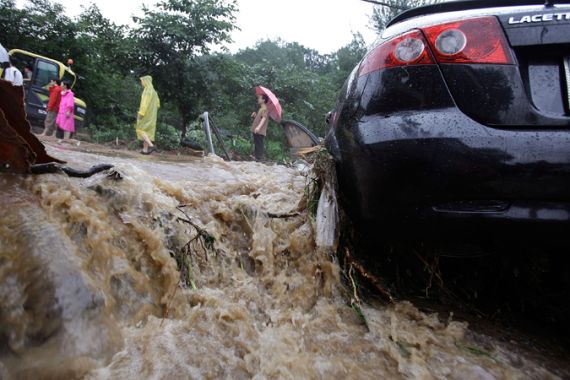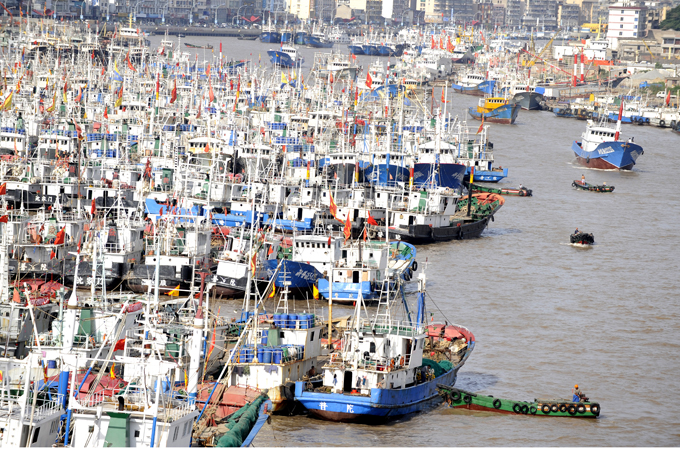Muifa threatens Yellow Sea Coast
Heavy rain and stormy seas threaten the region

 |
| In preparation for the storm, the fishing fleet was recalled to port at Zhoushan, China [Getty Images] |
China must be thankful that it seems to have been let off relatively lightly by Tropical Storm Muifa during Saturday and Sunday, but Muifa remains a threat to parts of the country.
China has seen severe flooding in many regions during July. This may well have influenced the Chinese authorities decision to take a cautious approach to Muifa. 600,000 residents were evacuated and its Shandong fishing fleet was recalled. More than 200 flights were cancelled and bridges to outlying islands were closed.
Keep reading
list of 4 itemsAfter the Hurricane
World’s coral reefs face global bleaching crisis
Why is Germany maintaining economic ties with China?
At 00 GMT on Monday Muifa was located in the central southern Yellow Sea. It had already dropped huge amounts of rain across South Korea, with the island of Jeju, south of the mainland, recording a massive 220 millimetres.
The heaviest of the rain is expected to work its way along the Korean Peninsula – an area which was affected by some of the worst flooding during living memory in July.
Muifa’s winds are continuing to ease as it spirals northwards, but by the time it makes landfall at around 12 GMT Monday, on the border between North Korea and China’s Liaoning province, they are still expected to be around 100 kilometres per hour.
This region, and particularly the Korea Bay area, is likely to suffer the brunt of the bad weather, with waves predicted to reach nine metres. Coastal flooding is likely and China has concerns for a chemical plant in the port city of Dalian. Here, a partially built dyke, built to protect the plant, has been breached by the rough seas.
As China’s authorities attempt to shore up the dyke, this densely populated and relatively low-lying area, which extends eastwards into North Korea, is likely to experience the worst of Muifa’s weather. Thereafter this tropical storm is expected to weaken rapidly as it heads northwestwards across China’s Jilin and Heilongjiang provinces.